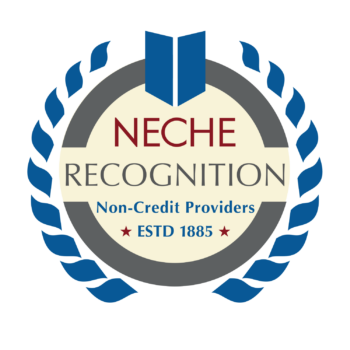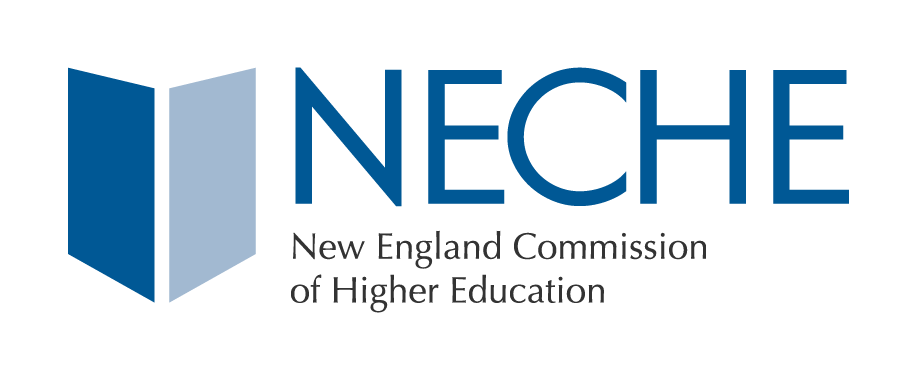
NECHE Quality Assurance Framework for Non-Credit Programming
The New England Commission of Higher Education (NECHE) Quality Assurance Framework is intended to articulate the dimensions of quality specific to non-credit programming. Its purpose is to both assure the quality of non-credit programming offered by an organization as well as provide aspirational guidance for continuous improvement.
NECHE defines non-credit programming as a course, series of courses, or program that provides knowledge in a subject matter area that may lead to the award of a certificate, badge, or, in some cases, licensure. Non-credit programming has industry and employer relevance and may, in some cases, transfer to credit-bearing programs. For the purposes of this Framework, non-credit programming does not include courses offered exclusively for personal enrichment (i.e. baking, home & garden, arts & crafts, spiritual enrichment).
For those organizations that offer non-credit programming, the criteria below provide qualitative markers that can be used both to assess the quality of non-credit offerings as well as to foster a culture of continuous improvement.
Markers of High Quality Non-Credit Programming
Design: Structured processes exist that ensure the design of quality non-credit courses and programs. Courses and programs are developed and overseen by educators with degrees and/or relevant experience appropriate to the subject matter. There is engagement with and across relevant constituent groups including employers, other providers of educational programming, and relevant state agencies, as appropriate.
Planning: There is regular engagement in program, enrollment, and financial planning for the organization. The provider balances short- and long-term/strategic planning to ensure it is able to effectively respond to market needs and requests. As appropriate, industry, employers, or other relevant constituent groups are involved in the identification and development of offerings.
Agility: The organization recognizes and supports the need to develop innovative, non-credit programming in a timely manner to respond to industry, employer, or higher education needs.
Student Learning: A relevant set of competencies and learning outcomes are identified for each course, program, and/or educational programming that leads to outcomes of value (e.g., employment, job advancement, transfer to credit-bearing program) for students. Offerings are of an appropriate length and level to achieve the established competencies.
Student Support: There are sufficient learner support systems in place to ensure the success of the organization’s students such as advising, tutoring, and library and technology services. The provider offers an array of student services appropriate to the needs and goals of its non-credit student. Students enrolled in these programs have access to other resources, as appropriate, and are considered a part of the organization’s community.
Content Relevance: The subject matter of non-credit courses, programs and other educational offerings is current, relevant, and connects to industry, work force, or other educational needs.
Qualified Faculty: The organization employs staff and faculty sufficient in role, number, and qualifications (with emphasis on ensuring relevant experience) to develop and teach the organization’s non-credit offerings and/or educational programming.
Evaluation/Student Success: The provider has identified relevant key performance indicators and student success measures including, but not limited to, course/program completion, satisfactory performance, pass rates, and, as appropriate, licensure rates. Student success data is gathered and analyzed by the appropriate constituent groups regularly, including the disaggregation of data to ensure the program is meeting its goals for all student populations. Systematic feedback from employers and other relevant constituencies is a demonstrable factor in the improvement of the programs.
Return on Investment: Non-credit offerings and educational programming have positive outcomes of value, including, but not limited to, employment rates, job promotion rates, transferability of credit, and return on investment. The organization collects and analyzes these outcomes, shares them publicly with prospective and current students through its website and other media, and uses this data for development and improvement of its programs.
Pipelines: As appropriate, non-credit courses and programs have transfer pathways to credit-bearing programs or pathways to employment. The content and learning outcomes of stackable non-credit courses are appropriately scaffolded.
Markers of Organizational Commitment to Non-Credit Programming
Mission alignment: The offering of non-credit or other educational programming is encompassed in the organization’s mission and purposes.
Governance: Non-credit programs are integrated into the organization’s governance structures and provide for the appropriate participation of constituents.
Admissions and Records: There are effective processes and systems in place for communicating with, marketing to, and enrolling students and for issuing credentials/transcripts to students who successfully complete the program of study. The provider maintains a record of course/program completions of its students.
Financial Capacity: There are sufficient financial resources from tuition, grants, and other sources of funding to carry out its plans to offer quality programming.
Organizational Research Capacity: There is sufficient capacity to systematically collect and use data to assess its non-credit courses and programs. Data governance processes ensure that constituents have access to appropriate data as needed.
Physical and Technological Capacity: The organization has sufficient physical, information, and technological resources to ensure the quality of its offerings and the success of its students.
Public Disclosure: The organization publicly discloses to the public (via its website and other promotional materials) information about program costs, learning outcomes, and measures of student success.

